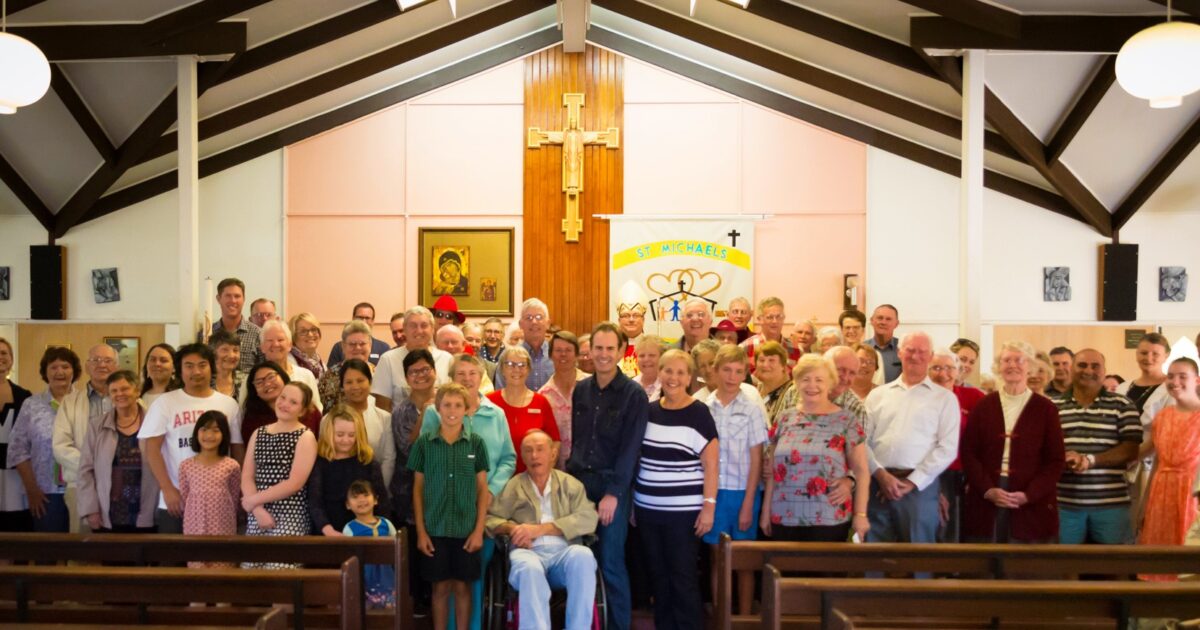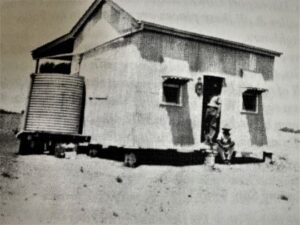A History of a Diocese – When ‘life story’ becomes ‘life history’
22 May, 2024
This is the first of a series of articles by Dr Maree Ganley leading up to the publication this year of the history of the Diocese of Rockhampton.
My task has been to draw together in historical format a record of the shared religion of Catholicism, of the values, attitudes, beliefs and stories of the people of Central, Inland and Coastal Queensland.
This is in part a history of an age when religion was the glue that bound Australian society together and it is a history of the current reality when we are not able to make that generalisation any longer.
The dimensions of life within a current living community are illuminated by oral testimony derived from interviews in a variety of settings.[1] In order to meet people in their localities and homes, I travelled extensively for twelve months into coastal townships of Central Queensland and sat at kitchen tables in remote inland properties and small western regional townships. I visited cemeteries, local museums and Historical Society Centres and gathered up many publications of local histories from parishes, schools and districts.
Australian Church historian Patrick O’Farrell argues that real history is often ‘hidden away in the minds and hearts of ordinary men and women’. More recently, Australian historian Roy Williams adds that this is true of much religious history where little survives of the thoughts and beliefs of the people to whom all clerical activity is directed.
The process for me as the interviewer was to move from life story to life history. The interviews I conducted included women and men of varying ages and some people in special pastoral and administrative roles in the diocese including priests, men and women religious, and one emeritus bishop – in all, about 120 people. I also received a number of personal written reminiscences and documentation.
The chapters in this history are defined by themes rather than the approach in traditional histories that have tended to be linear and chronological. This approach allows for the personal stories to enhance and inform the topic rather than their being inserted merely as add-ons in set timeframes.
In a section of Chapter Two on Rites and Rituals of the Church, I give you one example of how the documented history, in this case, the history of the Rosary is grounded in diocesan history and brought to life through diaries, personal letters and photos from family albums. I traced the history of the introduction and practice of the rosary through the ages and the records of many personal stories of Catholics whose practise centred around its recitation in the remotest corners of the Rockhampton diocese.
These excerpts are taken from the diary of Rockhampton priest Father Dave O’Meara from 1914 and the personal letters of Mr Joseph Anton Schick from 1934.
I have written …In 1914 pioneer priest of the Rockhampton Diocese, Father Dave O’Meara often met and camped beside the bullock wagon teams on his journeys inland. The priest recalled during one of these meetings with a teamster along the road,
Each night before we retired to rest, all on the road with him (the teamster) had to join in the family Rosary, said under the wagon or under the tarpaulin
One teamster kept a diary of his journeys noting the difficulties of the times, such as no water for 100 miles, grass scarce, horses perishing from eating poison weed after rain. Yet all the time religion was central to the man’s life. In his diary the teamster recorded on Sunday, April 17, 1892, at Blackall.
“Camped here and went to Mass”[i]
The copies of letters of Police Constable Joseph Anton Schick (1904-1982) the son of German migrants to Queensland, described how he maintained a commitment to the practices of the Church in the harshest of conditions. In 1934, as a thirty-year-old police constable in the Queensland police force, Joseph was transferred to the remote settlement of Bedourie, approximately 1,600 kilometres from his home in Brisbane.
 His rounds also included Birdsville on the Queensland, South Australian border. In one letter he replies to one of his mother’s first questions when she inquired if there were a Catholic church at the Bedourie outpost. Joseph replies that the nearest church was ‘500-600 miles away and that a priest visits once in a blue moon’. Joseph then teases his mother
His rounds also included Birdsville on the Queensland, South Australian border. In one letter he replies to one of his mother’s first questions when she inquired if there were a Catholic church at the Bedourie outpost. Joseph replies that the nearest church was ‘500-600 miles away and that a priest visits once in a blue moon’. Joseph then teases his mother
‘(I)t looks as if (I) am going to be let go to the dogs’.
Bedourie corrugated iron police station
residence and watchhouse.
He concludes in his letter,
(Don’t worry mum, I say my prayers night and morning, and say the Rosary every night, and try to be as good as I can and the first chance that I get, I will go to the Sacraments whenever that will (be)…[ii]
In Central and Western Queensland it would be in conditions similar to the side of the track with the bullock wagons or the Bedourie police station that itinerant priests celebrated the Mass, conducted the sacraments and carried away the records of baptisms and marriages in their saddlebags. For a brief moment in time, a religious ceremony however basic, through its words of scripture and ritual actions suspended time and place.
[1] Valerie Yow, Recording Oral History: A Practical Guide for the Humanities and Social Sciences (Walnut Creek: Alta Mira Press, 2005). 14.
[i] Father David O’Meara, Souvenir Hughenden, 13f
[ii] Anton Schick, 1998. 81

